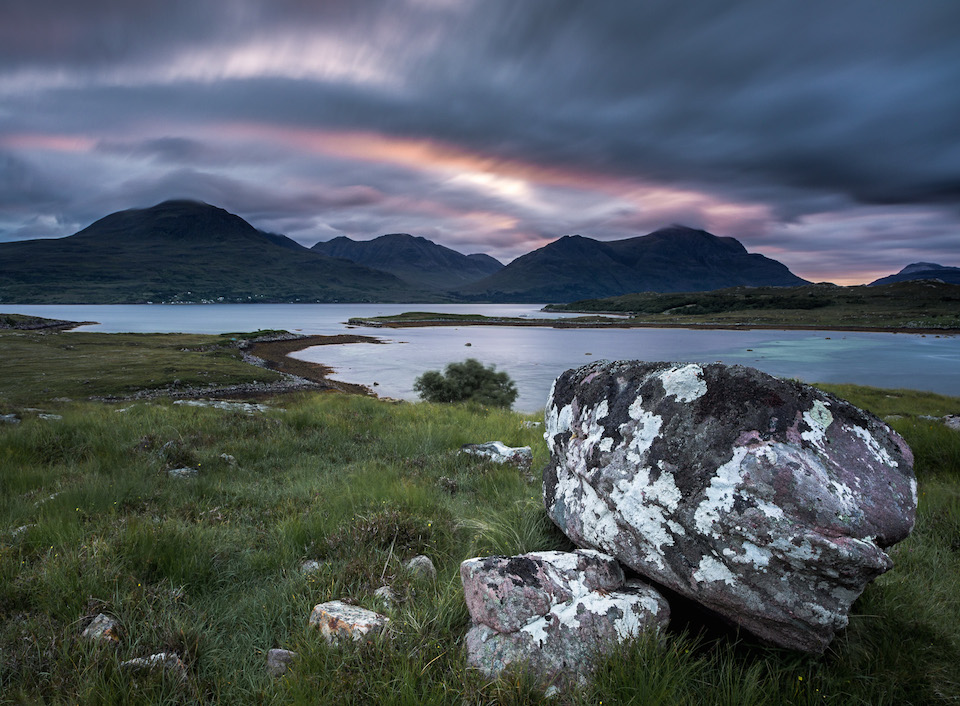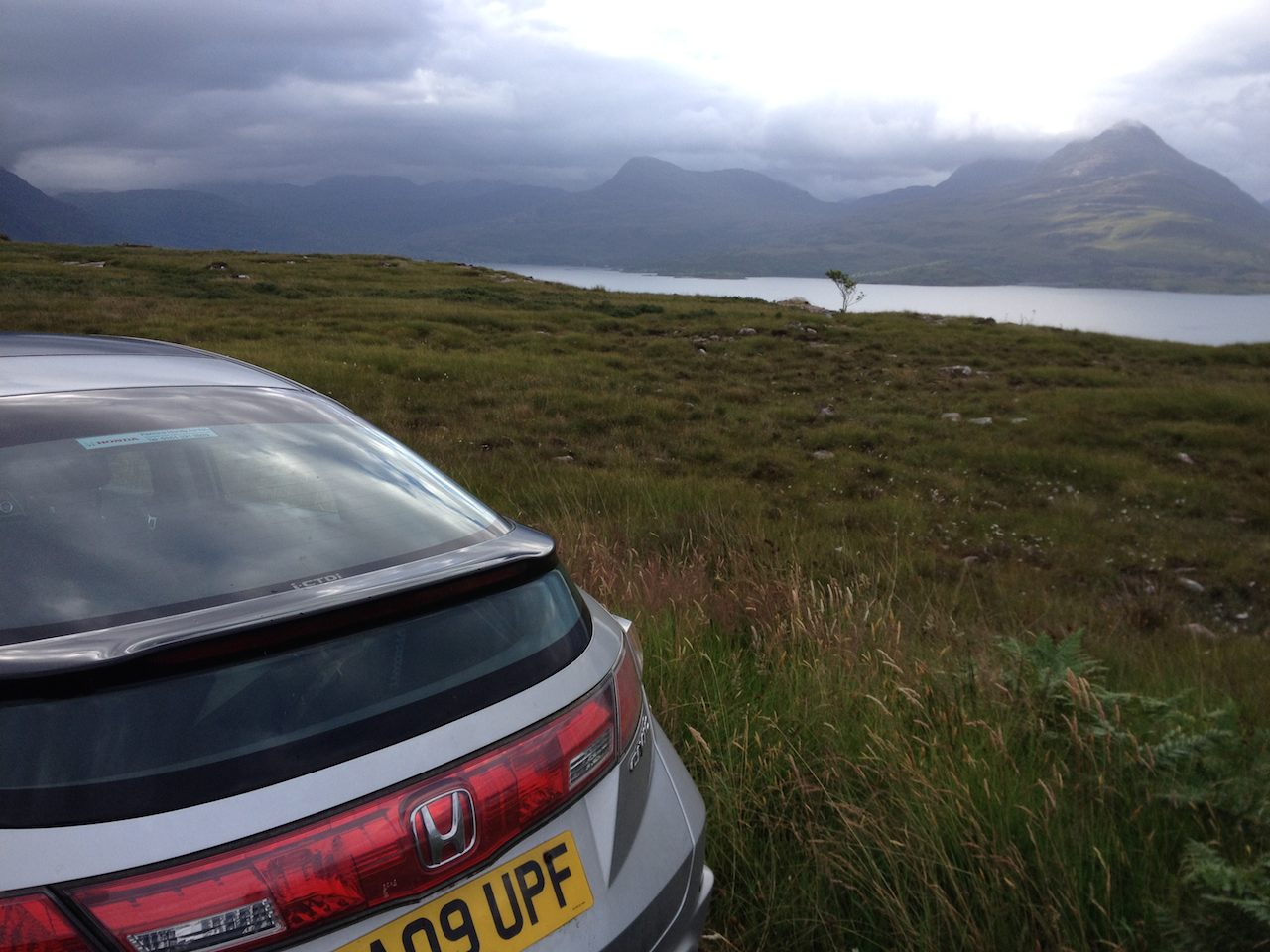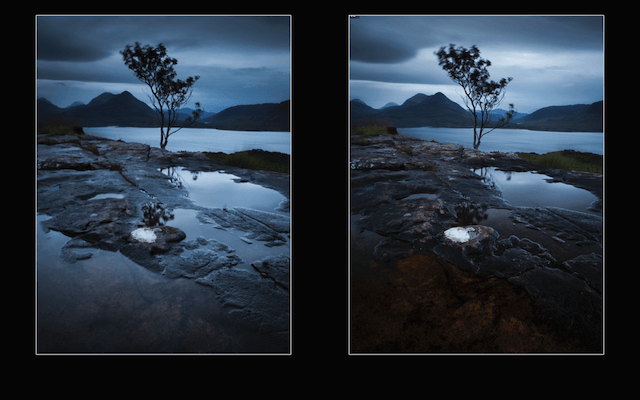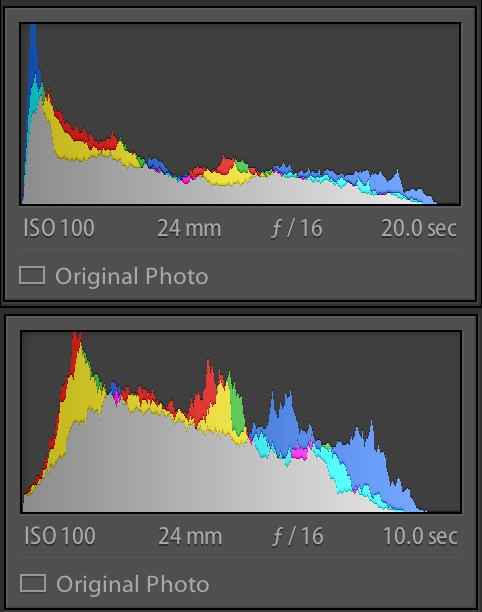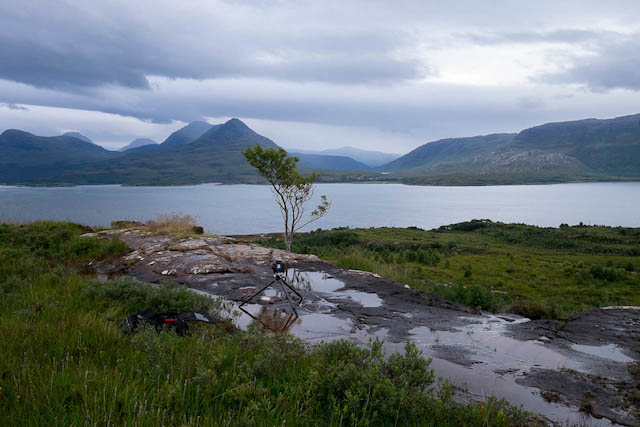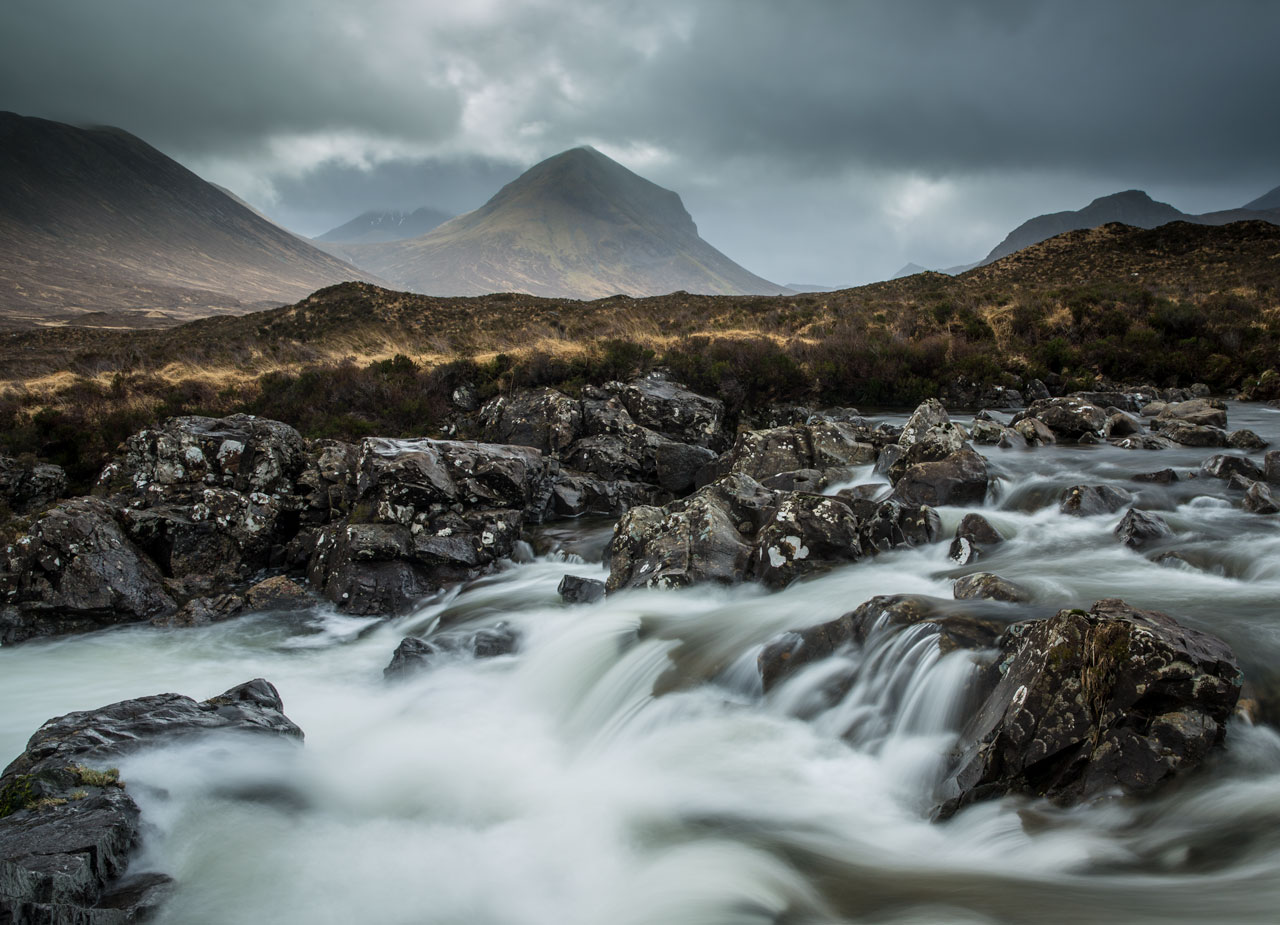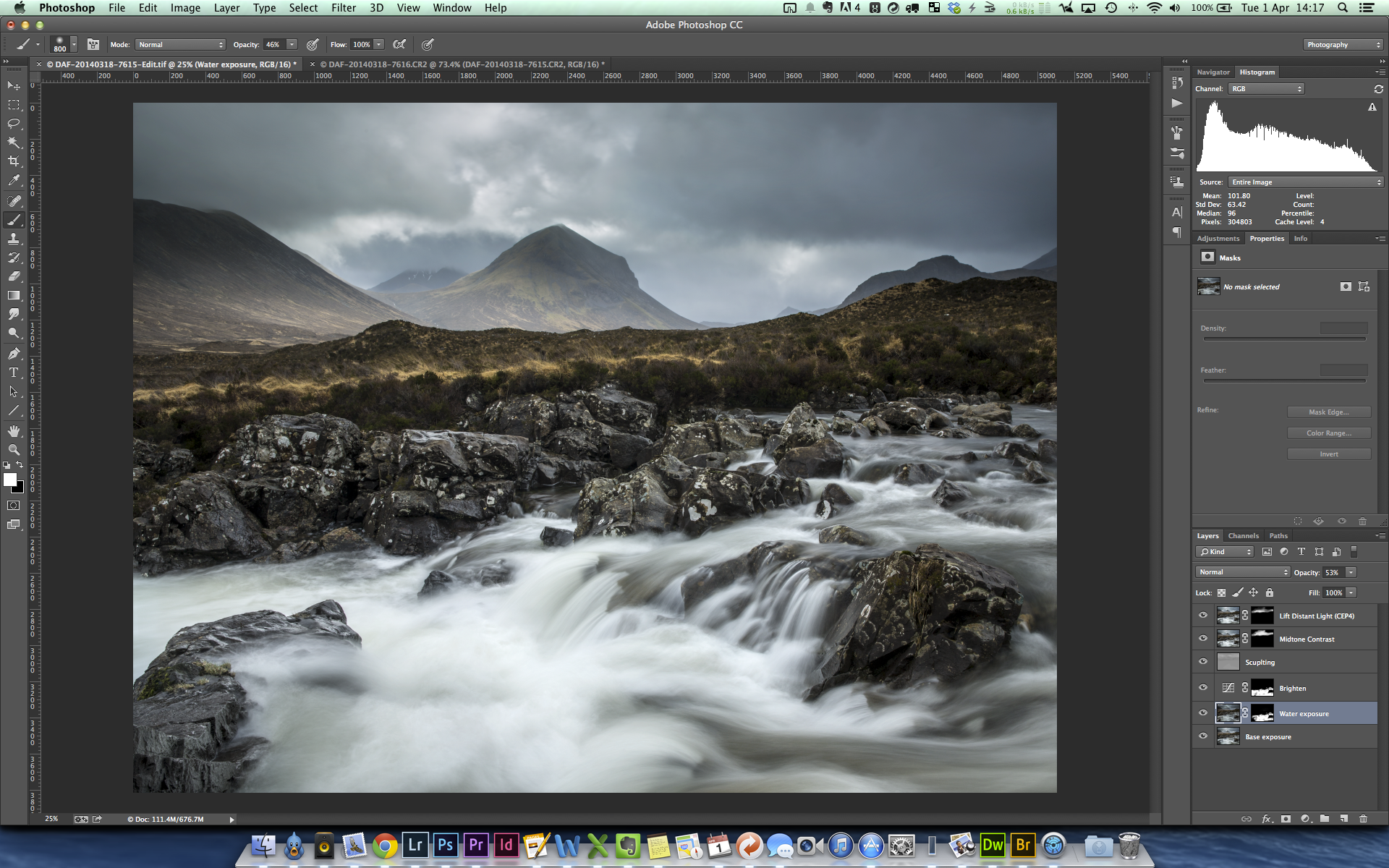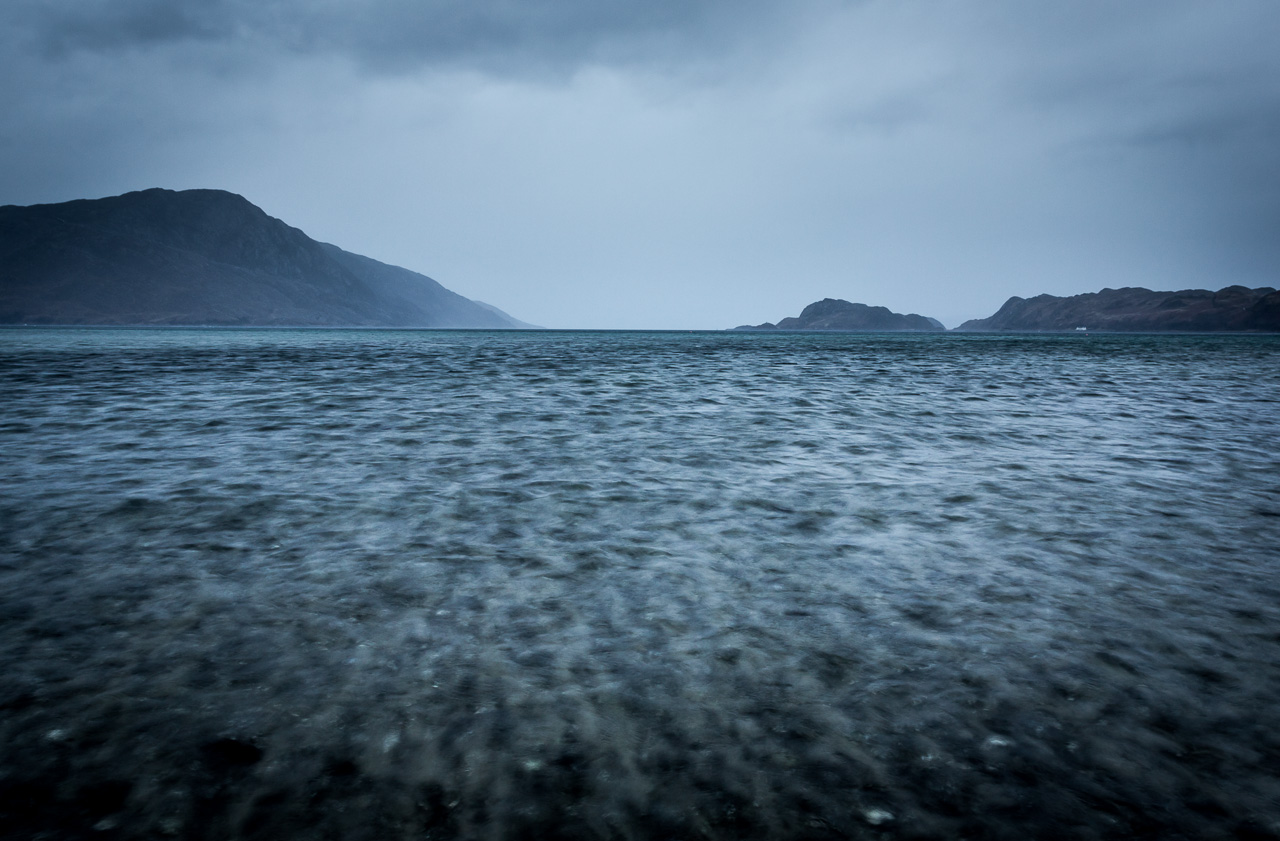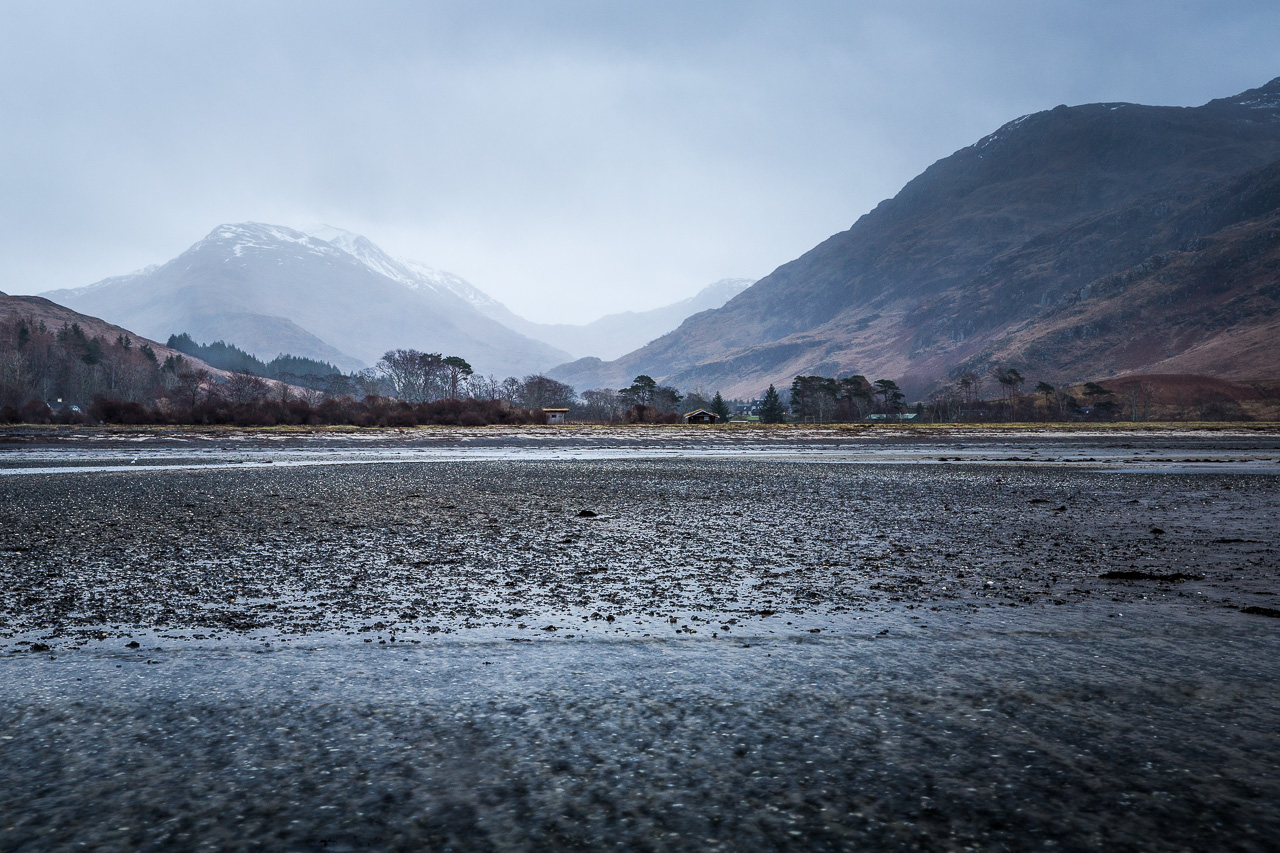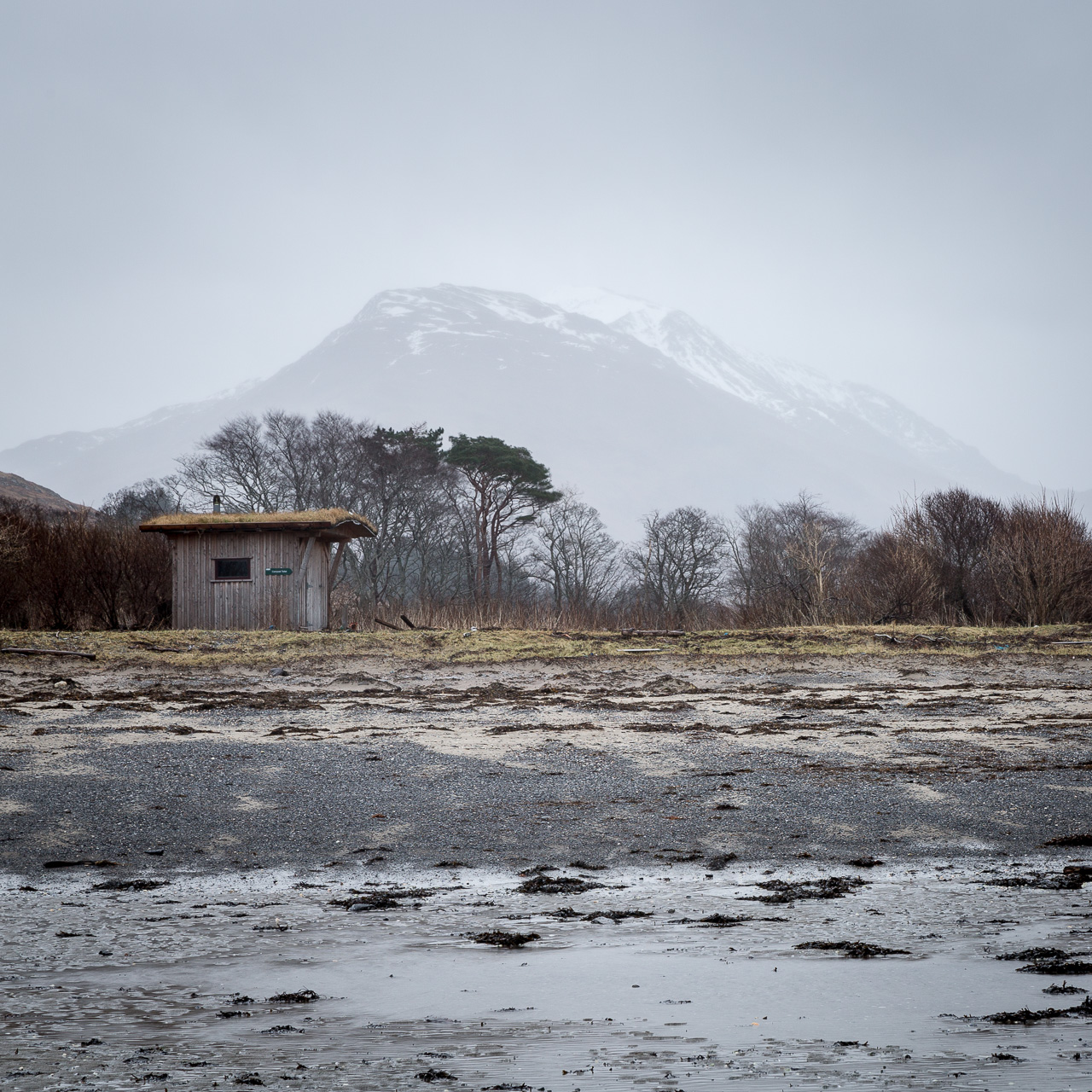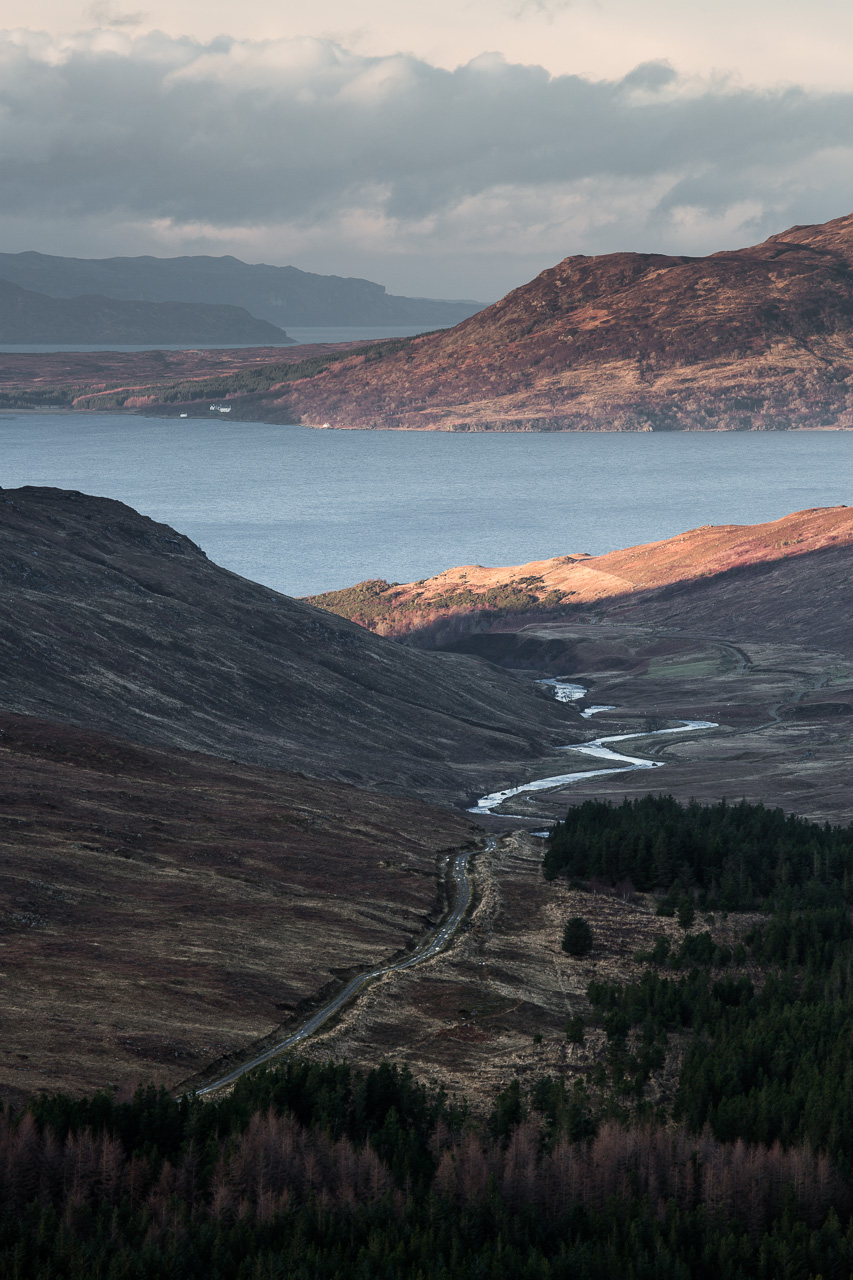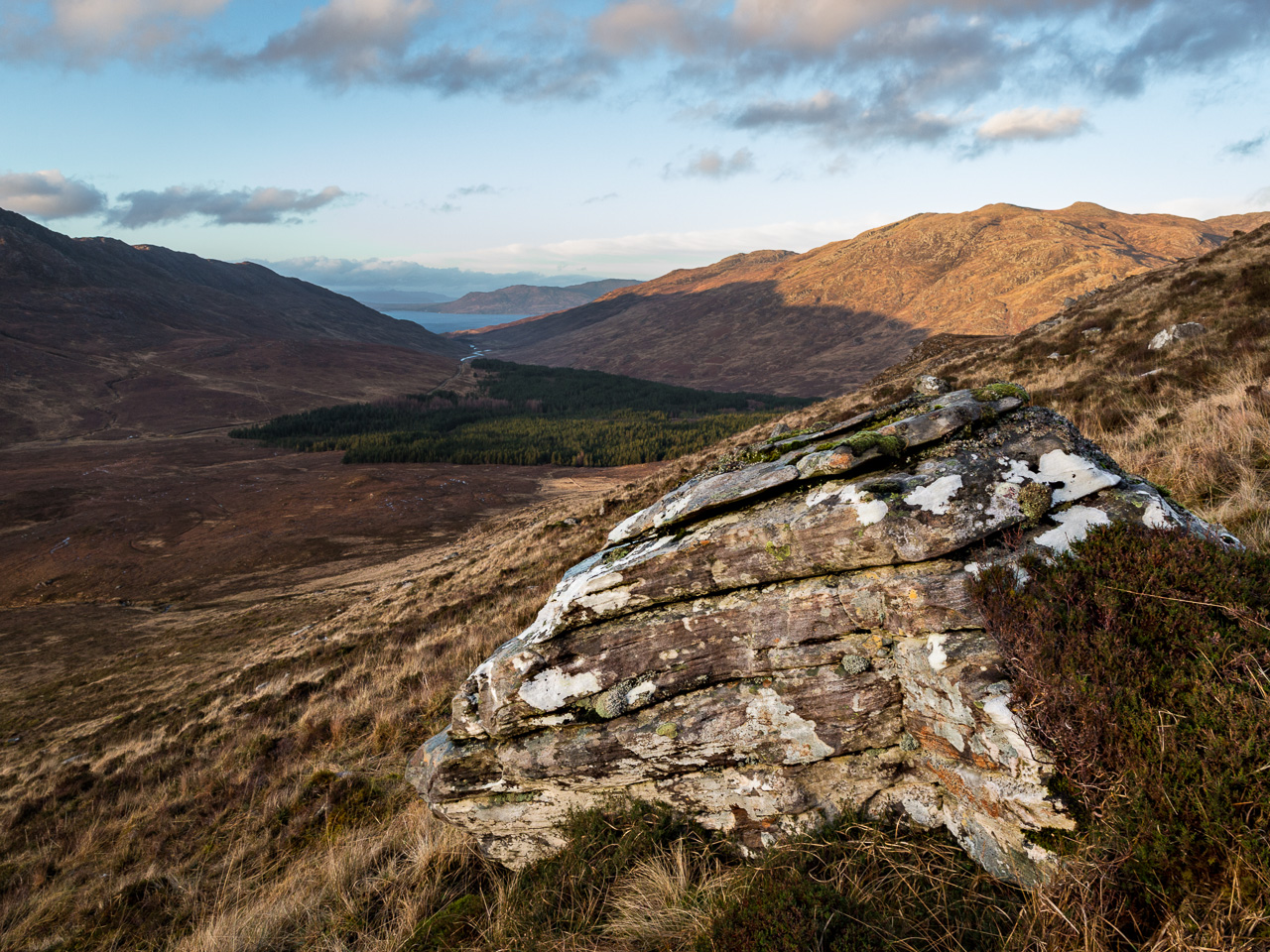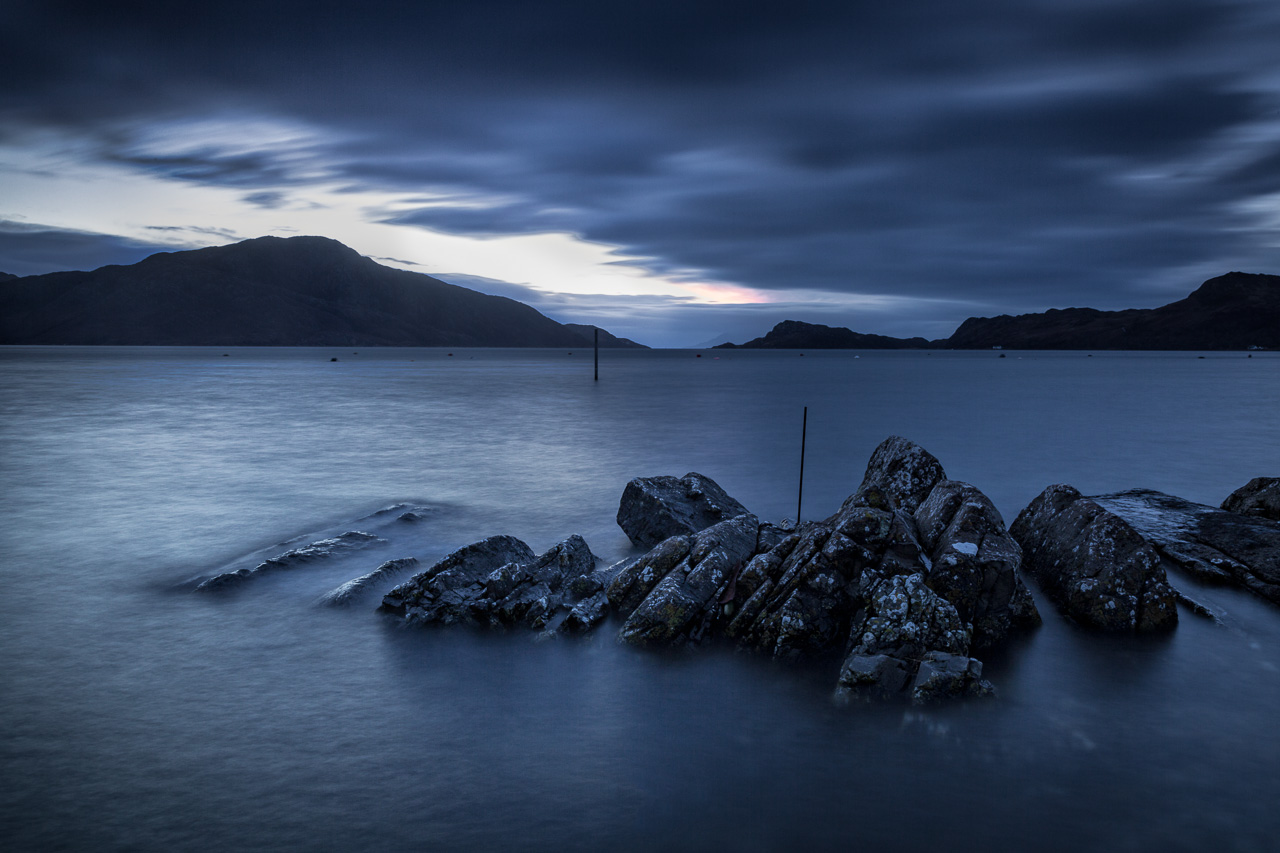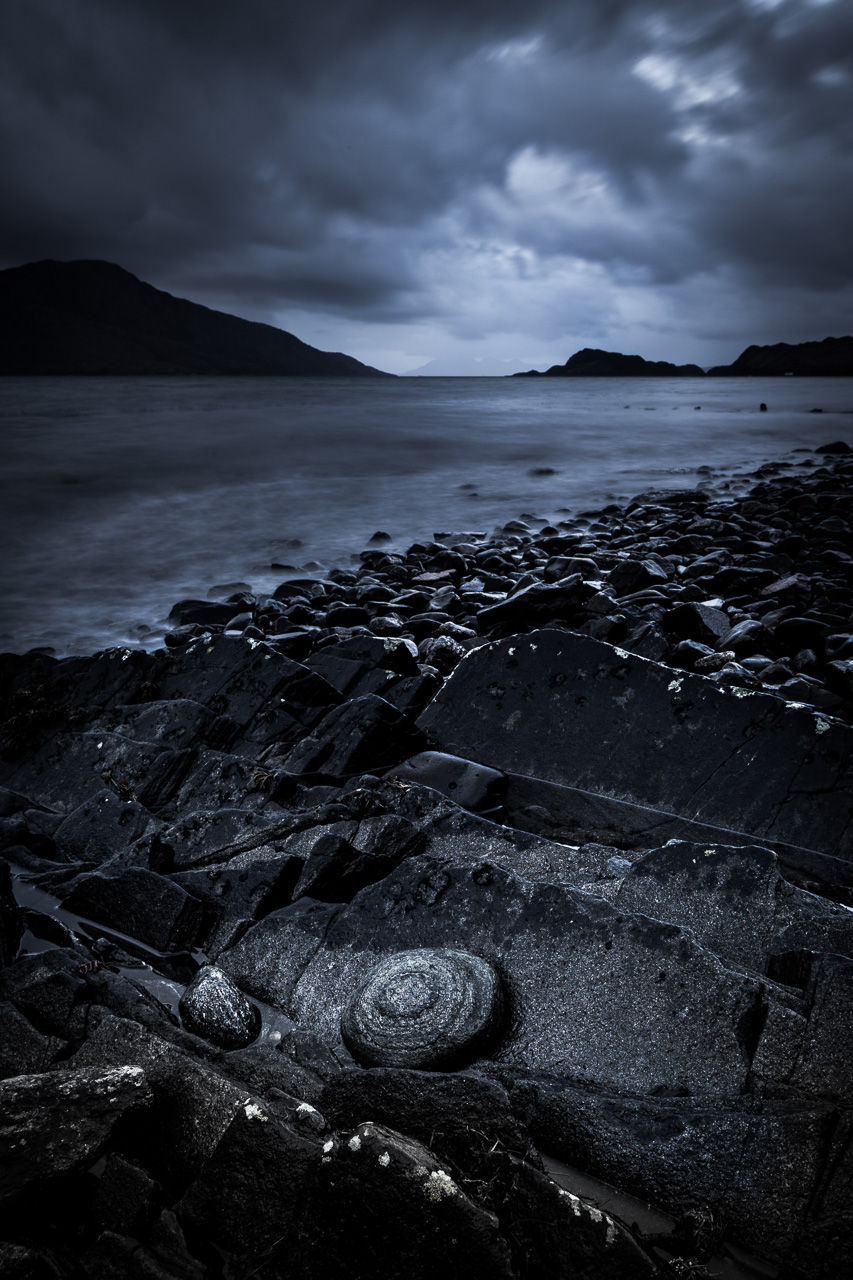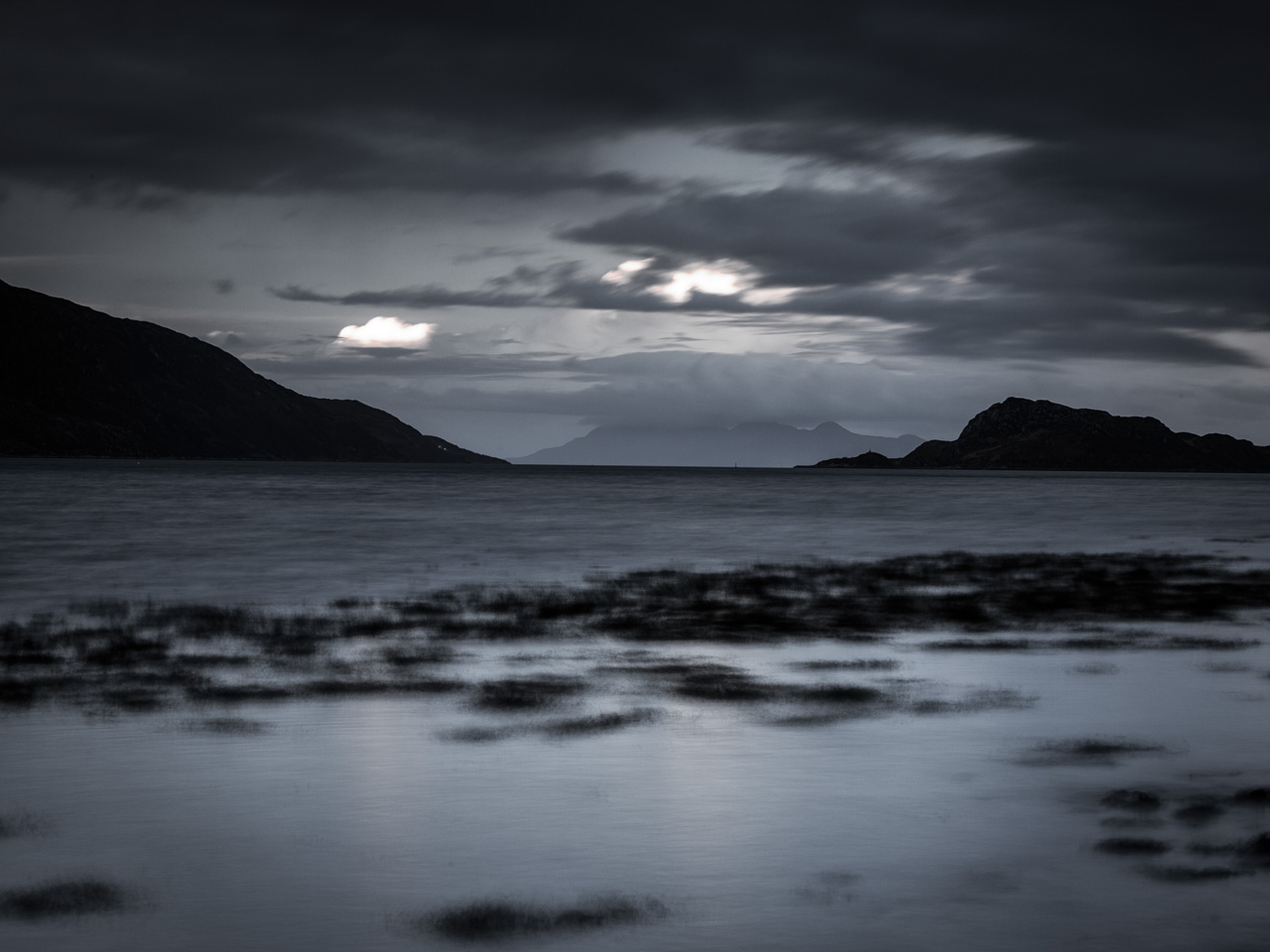Happy New Year! I hope you find 2014 to be an enjoyable and creative year for you.
For my first post of the year I thought I’d share some thoughts and images from the Knoydart Peninsula where I spent New Year. Though on the mainland Knoydart is only accessible by boat from Mallaig. The sea lochs and mountains, including 3 munros, that surround it mean the only other way to reach the small village of Inverie is by foot, and quite a few miles of walking it is too! Hence Knoydart is described as Britain’s Last Wilderness and the excellent village pub, the Old Forge, calls itself the Remotest Pub on Mainland Britain.
I certainly felt remote being there. Or a better way of putting it was that my day to day worries felt remote whilst there. It was a lovely time spent with my little family and friends in a warm and welcoming community surrounded by incredibly beautiful scenery.
As our 3 nights away were predominantly family time my time out with the camera was limited. I managed to sneak out for 60-90 minutes at sunrise on a couple of mornings whilst our youngest daughter napped, and then had about 2 ½ hours on Hogmanay afternoon while everyone grabbed a wee nap ahead of the ceilidh and festivities later.
On the Beach
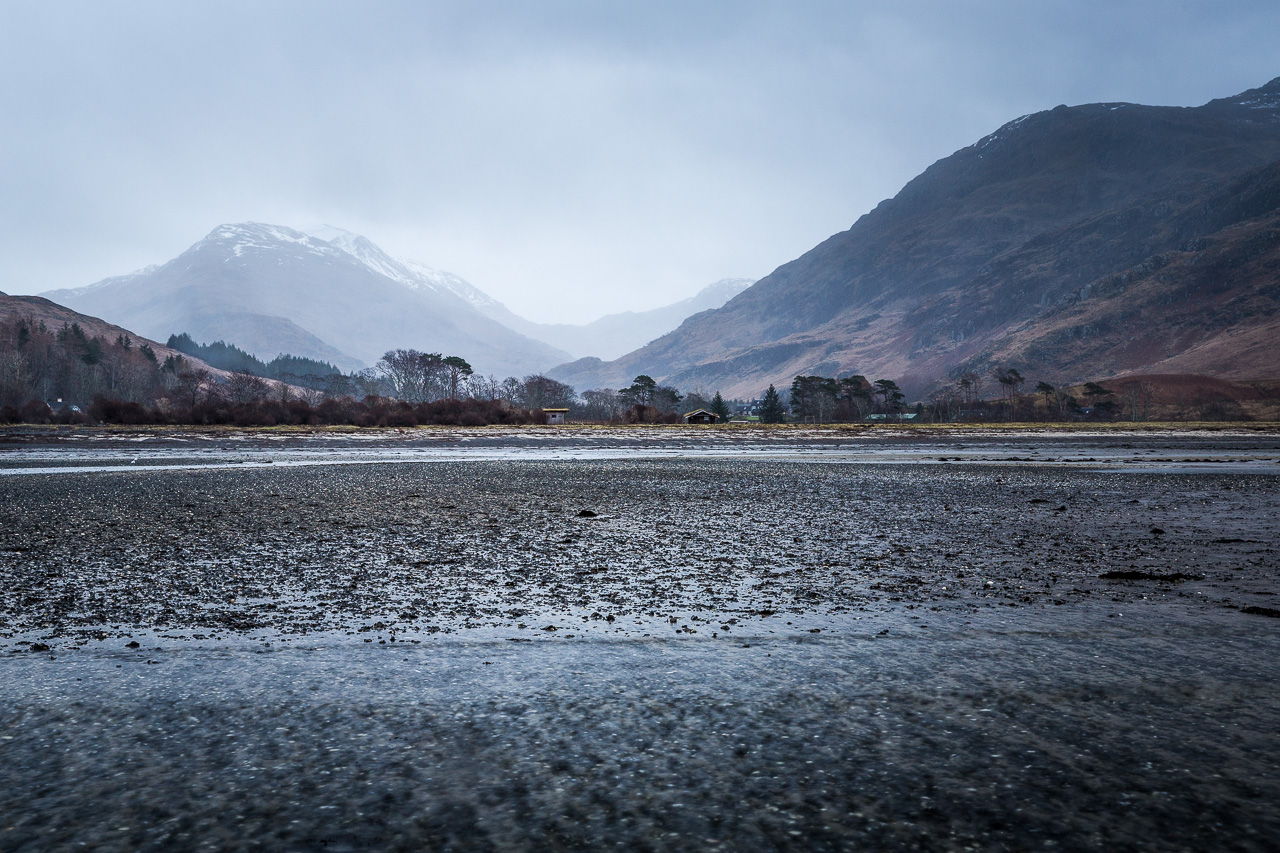
Both mornings were spent on Inverie beach. I had hoped to continue a series of images I started making in Northumberland a week earlier where rough seas crashed against the rocks.
However the narrow opening to Loch Nevis (map) means that the sea loch is fairly sheltered, and so the waves gently lap at the shallow beach rather than pound it. More research ahead of time would’ve changed my expectations if not the reality.
As a quick aside (and perhaps obvious to many) where you see a large beach marked on an Ordnance Survey map it is usually depicting a flattish and calmer stretch of beach. Even better on 1:25k Explorer maps you will see two blue lines on each side of the beach – one showing the mean low water mark and the other the high water mark – which helps give you an idea of how far the tide has to rise (and so also how quickly the tide will be moving. As an extreme example if you look at Morecambe Bay, notorious for its fast moving tides, you’ll see a huge expanse of sand, indicating a flat sand plain across which the tide moves very quickly).

To describe the landscape further, although surrounded on three sides by large mountains their proximity makes it difficult to make photographs of them. It’s hard to make a compelling image of a mountain whilst stood at its base. It seems to me that to make strong images of Knoydart’s mountains you need to either climb them or walk down the glens between them which takes several hours or more, time I didn’t have. So as strange as it seemed with them towering over me mountains weren’t my main subject.
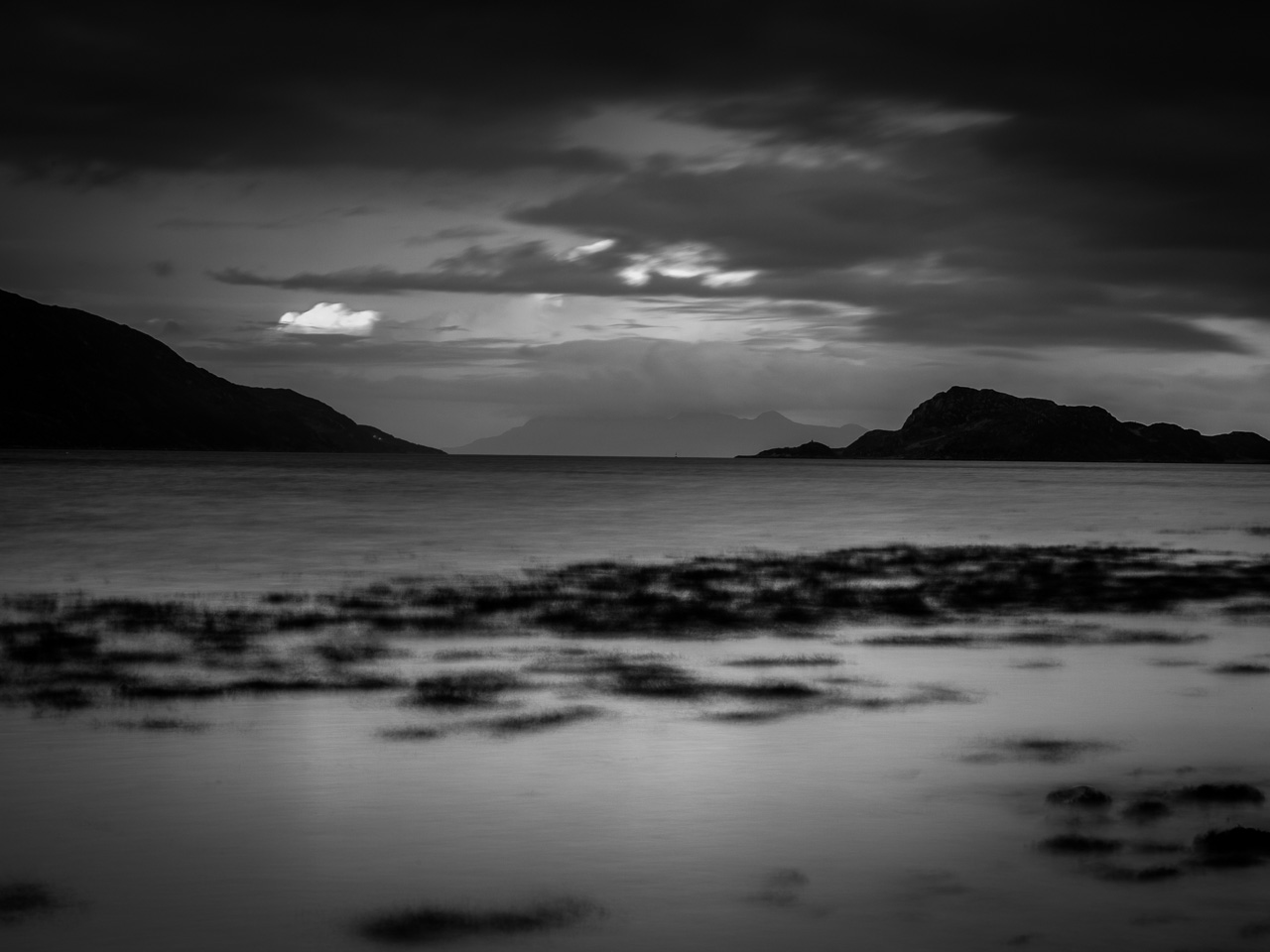
I worked along the stones on the beach, shooting towards the westerly neck of Loch Nevis, with Rum’s Cuillins visible through the gap. Even then I found it quite tough to find interesting rocks to work with and when I did it was only a matter of minutes before the tide had moved out beyond them. I got a couple of images that I’m happy enough with, but felt a bit too hurried for me to be completely satisfied.

In the Hills
On the occasion where I did get out for some more time I decided to climb a hill. My friend Jim (@knoydartjim; a pretty appropriate Twitter handle!) had recommended climbing part way up Sgurr Coire Choninnichen behind Inverie. The mountain has a flat plateau below the main peak that the locals refer to as ‘The Flats’, with views across Loch Nevis to Eigg and Rum to the southwest and also along the glen (Gleann na Guiserein) towards the Black Cuillins of Skye to the northwest.
My route started along some lovely woodland tracks in Inverie Woods before arriving by the deer fence on the on the lower western slopes of the hill. From here I worked my way up rough and boggy ground that wasn’t too steep but slowish going at times. It was one of those walks where the summit seems to recede as I got closer. An hour and a half into my walk I decided I couldn’t give myself much longer, so pressed on to the next rise and decided I’d make images from there, come what may.
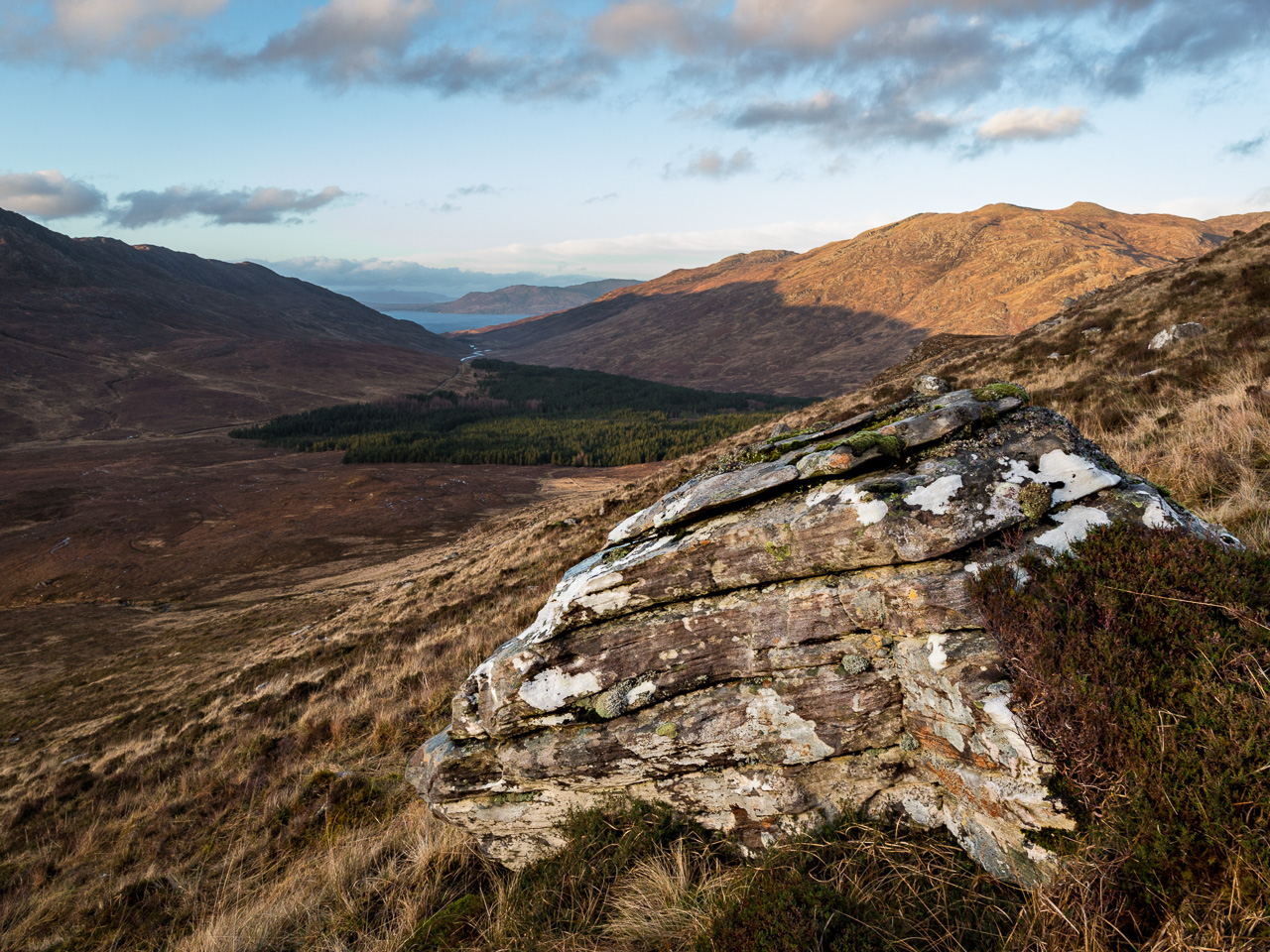
Several large boulders gave me something to focus on for some foreground interest. To be honest I find it difficult to put my heart into making images that so often amount to no more than ‘distant view with a rock on a lower third’. At times I think we can get a bit too desperate for foreground interest that we’ll use just about anything to anchor the image.
My view is that unless it’s in some way worthy of inclusion then I don’t see much point in including it – illusion of depth, or no. I remember Bruce Percy telling me “Find a rock that you love”. If you don’t love it, leave it.
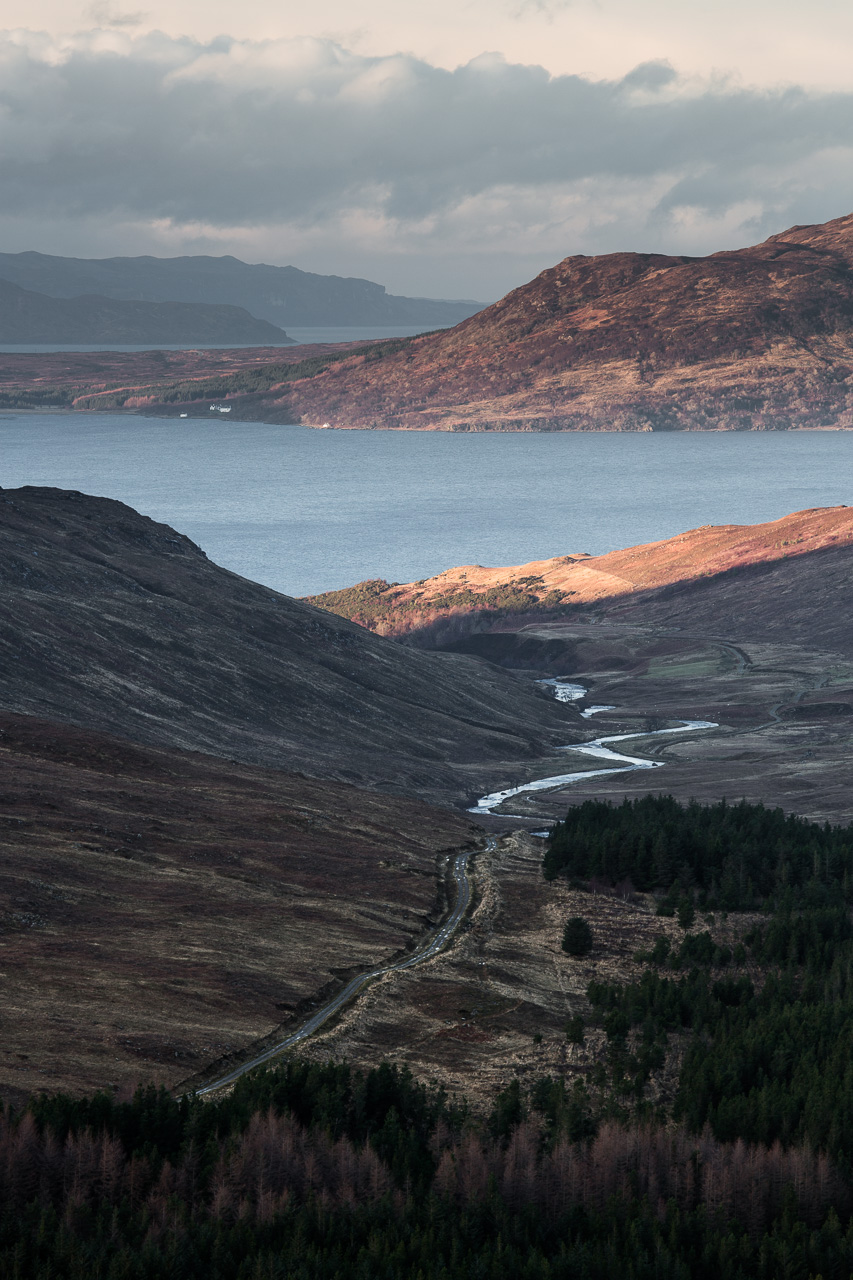
Again short on time (spot the trend) I just had to make something – anything – for a few minutes before starting the trudge back down the hill. Having done this so many times I don’t think this is a lesson I will ever learn. The pattern goes thus: I’ve only got a couple of spare hours. I want to climb a hill. I expect that once said hill is climbed that the most unique and sublime view will reveal itself. 2 hours later it doesn’t. I quickly take a photo of "a rock on a third" and start back down the hill bemused that it all went wrong (again).
Not only is the walk ruined – by racing to position and not enjoying it for itself – the photography is ruined by having too little time to fully explore the landscape and my response to it, returning with little more than a snapshot.
So I’m making this note to myself to either focus on the walk, take longer, or walk a shorter distance if I want to prioritise the photographs.
On this occasion I probably would have been better exploring the woods at Inverie, but a large part of me felt the story of Knoydart is untold without some mountain scenery. Better yet, perhaps I should’ve just enjoyed the walk in a beautiful part of the country without worrying about making images.
F-Stop Guru
The longer walk gave me the opportunity to try out a new big of kit that my wife gave me for Christmas - an F-Stop Guru backpack. I’m a huge fan of F-Stop gear. I’ve used the larger Tilopa BC for 3 years now and have always thought it’s as close to perfect as I can imagine any one bag getting. Sometimes though it’s just a bit too big and unwieldy, and gets pretty heavy at full load.
The small daypack that I used for commuting or to carry a small load had just fallen to bits and needed replacing so I looked at the Guru. With my previous bags I had the challenge of fitting my Fuji XE1 in with lunch boxes, laptops, books, etc. Well the Guru also uses the removable Internal Camera Unit (ICU) system of the larger bags so that I can have a dedicated and protected space for camera gear, and carry all of the other stuff I need.
I love the modularity of the F-Stop system. I can put a Medium ICU (same as I use in my Tilopa) with my Canon 5D3 and 4 lenses, or a Small ICU with the 5D3 and 2 larger lenses, or I can put in a Small Micro ICU which accommodates the smaller XE1 with room for a few more lenses. With the Medium ICU I have little room left for non-camera gear in the main compartment but with the Micro ICU I have lots of space, so I can tailor the pack to my needs - from carting loads of camera gear to carting loads of non-camera gear but still having a camera with me. Such a simple, no brainer system but it’s amazing (if pricey!).
The Guru also has a number of good sized pockets and pouches, takes my 15” MacBook Pro and feels really comfortable and well balanced on the back. It’s probably my new ‘if I could only have one' bag rather than the Tilopa, the size of which encourages me to carry more gear than I need most of the time. I’m very happy with it.
The only major downside of the Guru is that it doesn’t have dedicated tripod attachments. My extra large Gitzo tripod already dwarfs the Tilopa when strapped on and so attaching it to the side isn’t really feasible. This is only really an issue for longer excursions where the Tilopa will remain my main bag, I don’t mind carrying my tripod in my hand for a couple of miles.
I’ll write a proper review of the Guru - and the Tilopa for that matter - in the near future.
Magic Gear?
This was also a chance to take my Canon 24-70 lens for a good workout. Initial reaction is that it is super sharp especially in the corners - a noticeable step-up from my 24-105mm workhorse - but also that 70mm is quite limiting as the longest focal length for how I work. I found myself twisting instinctively for more reach to find I had none, and that extra 35mm makes a big difference. Better sharpness or better reach?
I’ll get used to changing lenses more often for more reach of course but, as I already knew, the choice between these two lenses isn’t clear cut. More time with the 24-70 will clarify my thoughts.
In the meantime I’ll reiterate my view that it’s quite rare that a single piece of equipment will magically improve our images. Often people rave about gear and I can't help but feel they are justifying their choices and the expense (see Guru comments above! :)). In most cases there are better ways we could improve our images than by buying new gear.
In Closing
Anyway there’s a few thoughts on my trip to Knoydart. It’s a beautiful part of Scotland, with a lovely feeling about it and a very welcoming community. It was great joining in with their Hogmanay celebrations. It was a cracking night and they definitely know how to party up there! It wasn't a hugely productive photography trip and I include the images here to show my failings rather than my awesomeness. But it was a time for my family and I don't mind coming home with little to show.
I think to make the most of Knoydart photographically you need more time than I had and a bit of legwork. There was a beautiful painting in our room at the Knoydart Lodge (which I can highly recommend; website) of a view from Sgurr Coire Choninnichen across several small lochans (on the Flats) looking towards the Inner Hebrides. I would love to go up and see it myself. I may even leave the camera behind. Maybe.


